Peach diseases and pests

Peach is a luxurious southern fruit that all gardeners dream of growing. However, it is worth considering that such a fruit tree is incredibly capricious. Even in a warm and stable climate, it will require constant maintenance. In addition, the peach is very often sick. All kinds of pests do not bypass him. In order to recognize the disease in time and take appropriate measures, you should be well versed in the symptoms and features of peach diseases.
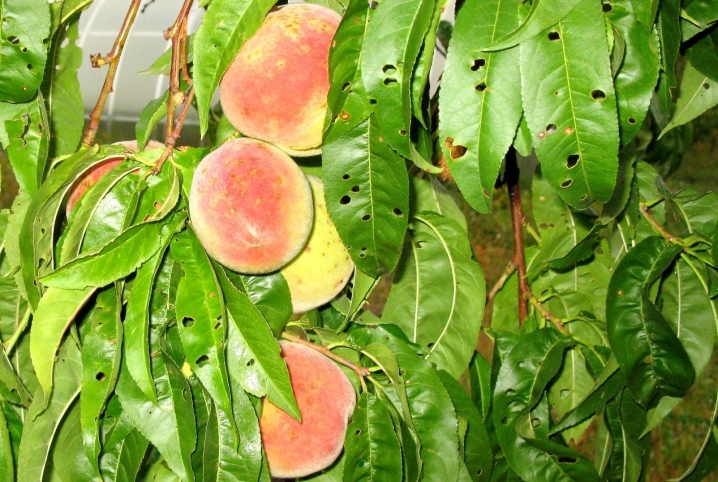
Types of lesions
Peach is susceptible to a wide variety of diseases. However, there are some ailments that are especially insidious and dangerous. A description of these diseases and methods of dealing with them will be useful to every gardener.
Clasterosporium disease
This disease is also called perforated spot in another way. And this is no coincidence. At the very beginning of the disease, foliage suffers. Brownish dots appear on it, which are bordered by a burgundy canvas. Further, the points turn into larger spots, and then holes appear in their place, which led to the name of the disease.
Clasterosporium disease begins to develop actively when the air temperature reaches +20 degrees. These are excellent conditions for fungus. From the leaves, the disease passes to the branches. This is also manifested by the presence of stains. Then the bark on the branches cracks, it may even burst, gum appears. The last stage of infection is the fruits themselves. They, too, become stained and rot.
The primary treatment for the ailment is pruning. It is necessary to remove branches and leaves that are already affected, and then burn them. Next, a mixture of lime and water is prepared, adding iron or copper sulfate there. With this composition, the wounds of the tree are treated. This is followed by treatment with a good fungicide. For example, you can take "Hom".
The tree will need to be sprayed with medicine at the time of the appearance of pink buds, before the start of flowering, and also after its end.
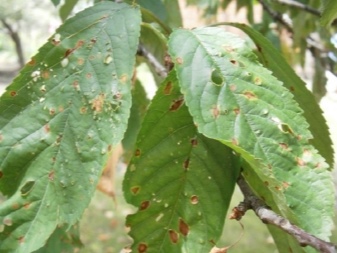
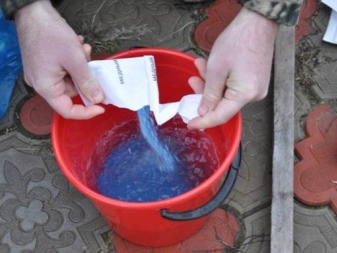
Curl
This fungal disease manifests itself in the fall. Most often, the pathogen enters the tissue of the tree due to the lack of processing of the sections, less often due to moisture. It is characterized by the appearance of blisters on the leaves, similar to bubbles. At first, these bubbles are light, and then they turn red. Even later, a substance begins to accumulate inside, which contains fungal spores. Leaf necrosis begins, the plates fall off. However, not only they suffer, there is also deformation of the branches, the appearance of gum. The crop does not grow on the affected tree.
To heal the plant first you need to isolate all diseased branches and foliage. The affected parts are carried away and burn... Next, the peach is processed Bordeaux liquid the concentration of which is 1%. This procedure will have to be carried out three more times, the interval between them is 14 days.
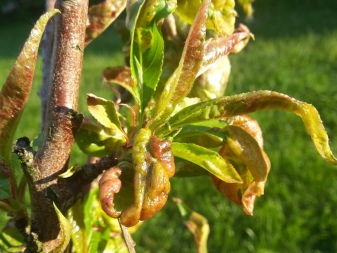
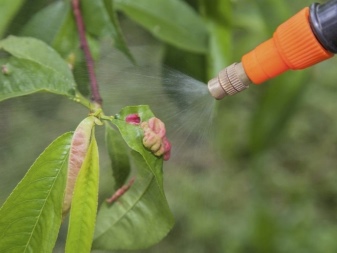
Powdery mildew
This fungal disease can also cause crop loss and tree death. It affects absolutely all parts of the culture. The causative agent, in the absence of preventive treatments, quietly hibernates in the tissues of the shoots, waking up in the spring. It is especially dangerous that the spores are actively carried by the wind. This means that not only the peach will get sick, but all the cultures in the immediate vicinity.
Powdery mildew got its name from white bloom, like grains of flour... At first, the plaque does not adhere tightly to the plants and can be easily removed with your finger. However, later it becomes denser, spreading further and further. This hardening makes it difficult for shoots and foliage to breathe, so the tree quickly decays.
It is quite possible to cure such an ailment if you make an effort. The first step is to carry out pruning, removing all the diseased parts, it is equally important to weed the trunk circle. Then carry out spraying with "Topaz"... Next stage - the use of colloidal sulfur in a concentration of 0.8%. First, the tree is processed at the time of bud development, and then - 14 days after the end of flowering. Then you will need colloidal sulfur at a concentration of 0.6%. Treatments with such a tool are carried out every 14 days.
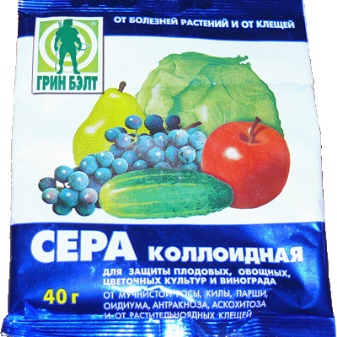
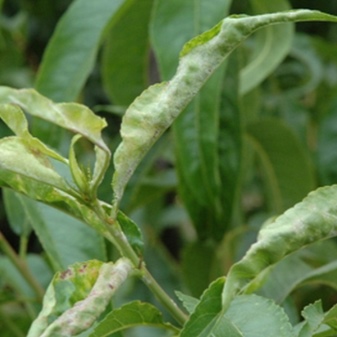
Cytosporosis
Cytosporosis is a fungal disease of the trunk. The pathogen begins to parasitize in the upper part of the peach tree. Further, the fungus gradually captures the entire trunk. Although the pathogen is initially located under the bark, soon the result of its activity will be visible to the naked eye. The top withers quickly, and streaks appear on the trunk, in which fungal spores are visible. These spores can also be carried by the wind.
Treatment for cytosporosis is to cleanse the affected areas of the bark... Then the culture is sprayed bordeaux liquid (3%). Also, all wounds will be needed cover with garden varnish. Attention should also be paid to the branches.
Those affected by the disease should be removed to a healthy area. In the most severe cases, even the strongest shoots must be removed completely.

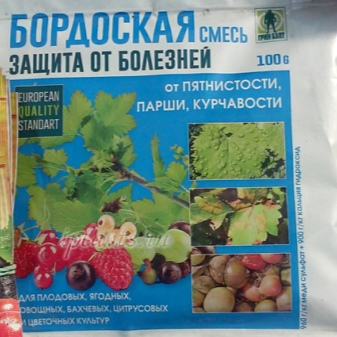
Gum therapy
Gum treatment is an ailment in which a tree secretes a viscous and sweet liquid that drips down the trunk in drops. Soon the mass solidifies. Such a disease arises because at some point the bark was damaged, which entailed a disruption of the life processes of the plant. It is difficult to determine the cause of the crack, because it can be both other diseases and pests, as well as the effects of climate, and mechanical damage.
Treatment of the disease is carried out as follows. First, the gum is removed from the tree. Then they are sprayed with copper sulfate... Once the product is dry, the affected areas cover with a mixture of clay and lime. A little vitriol must be added to the same composition. If wounds are visible on the tree, use a garden var. Sometimes it also happens that the damage to the tree is too great, they form whole holes. Such holes are lubricated with a special compound, which consists of a solution of cow dung and clay. After this part of the work has been done, you will need to find the reason for the ailment.

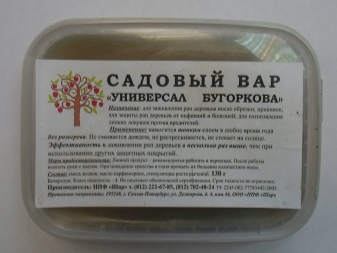
Moniliosis
This disease most of all affects the fruits, but it can be recognized by other signs.... The first symptoms are visible on the leaves, which begin to wilt and sink. Then the disease spreads to the inflorescences, affecting them. Then he moves to the fruit. Ripening peaches are covered with large dark spots, which soon begin to rot and give off an unpleasant odor. Brown spots are also covered with a whitish croup-like bloom. The fruits do not fall, continuing to hang and attracting clouds of wasps to themselves.
The first step in the fight will be complete removal of all diseased parts. All fruits with signs of defeat must also be plucked. Sore parts immediately burnbecause the fungus can travel hundreds of kilometers in a matter of hours. Then the culture is to spray... First apply Horus, guessing the moment before the plant is still covered with flowers. When the peach has faded, they are treated with a fungicide. "Topaz". The very last resort would be Topsin.

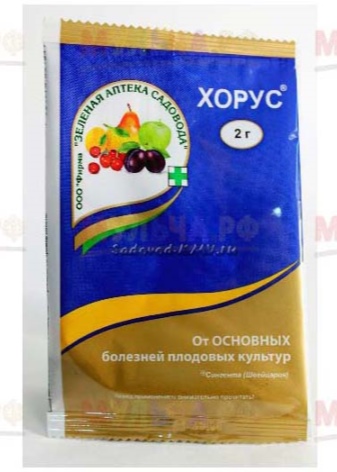
Coccomycosis
This is another fungal disease that can compare in danger with moniliosis. The disease is activated at the very beginning of summer, and it is noticeable immediately. Tiny specks of a brown hue appear on the leaf plates. After a month, the points increase in diameter, merging with each other. Fungal spores will be visible on the bottom of the leaf plate. The leaves begin to spin, and then completely fall off. Having destroyed most of the foliage, the disease spreads to other parts of the plant.
To cure coccomycosis, you need to wait until the kidneys swell. When it comes, the peach is processed fungicides, which contain copper, for example, Bordeaux liquid. After the formation of buds, spend spraying with Horus... It is also used after flowering. It is also recommended to remove diseased plant parts.
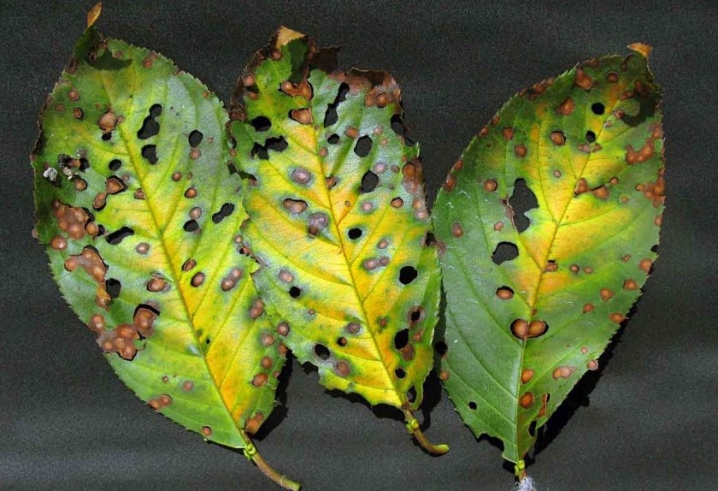
Pests
Peach is affected not only by diseases, but also by pests. Below is an overview of the parasites that most commonly attack the culture.
Aphid
This insect is one of the most common. Lives not only on peaches, but in general on any crop that has leaves. Aphids are of several types. For example, there are blood aphids, yellow, gallic, green, white. Most often, black representatives of this species are found. However, the appearance of aphids actually does not play any role, because they cause the same damage. A sticky coating appears on the foliage, causing the plates to twist. The parasite sits inside these "twists".
If the plants are still far from fruiting, then it makes sense to resort to insecticides. You can take "Aktara", "Decis", "Confidor"... Dilution proportions are indicated on the medication sachets. Violating them is highly discouraged.
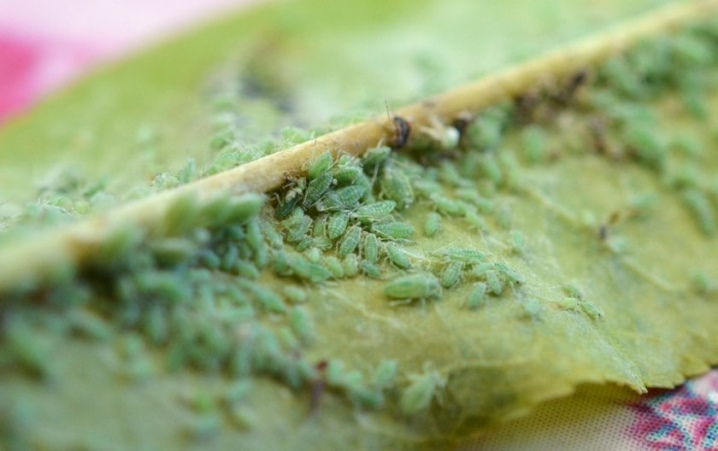
You can also try to fight aphids with the help of folk remedies. Let's consider the most effective ones.
- Dandelion... Take 0.4 kg of dandelion leaves and fill it with a bucket of heated water. Cover and leave for 120 minutes.
- Tomato tops. You need to take 0.2 kg of chopped tops and two liters of cold water. The composition is brought to a boil and kept on the stove for 30 minutes. Then diluted with 10 liters of liquid. Before using it, it will be advisable to add a couple of spoons of soap to the solution.
- Garlic... Take 0.2 kg of garlic cloves, chop directly with the husk. Pour the chopped garlic with water in the amount of 10 liters. Leave for 20 minutes and then apply.
In addition, aphids can be destroyed systematically, simply by directing a powerful water jet at the colony. You also need to take care of the ants, because it is they who bring the insects. Anthills must be destroyed immediately, and special traps will help. It is recommended to lime the peach trunk.
Important: an excellent method of controlling aphids and preventing their appearance is to bring ladybirds to the site. These insects will become the gardener's real living weapon.
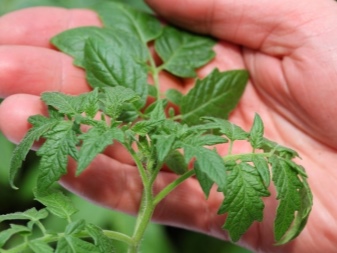

Weevils
These are small brown or gray bugs. They survive the winter in the ground, and in the spring they become more active, feeding on the sap of the leaves of the tree. They also love to eat flower petals. Ripening fruits of weevils are used as a masonry site. The affected fruit quickly falls to the ground. In addition, the weevil is also dangerous because it actively spreads fungal and viral pathogens.
The first step from the tree is to remove all insect-affected fruits, as well as buds with brown spots. Then they examine the bark: if any part has peeled off, it must be removed. The next stage is whitewashing the trunks... The last is the treatment with insecticides. It is carried out before and after flowering.
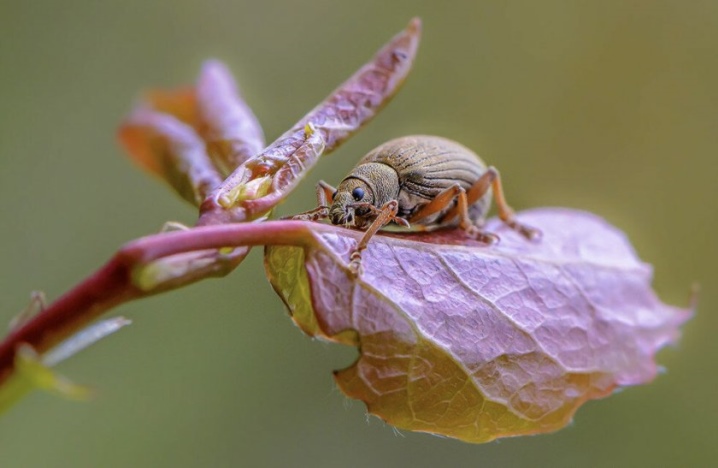
Fruit mite
This is a small insect that looks like a bug outwardly.... The insect lives under the bark, and spends the winter there. You can find out about its appearance by deformation of the kidneys. The latter hypertrophy, become huge, and begin to grow sideways. The shoots dry out, as do the foliage, which quickly falls off.
In this case, using insecticides is useless. To get rid of the pest will allow such a remedy as colloidal sulfur... It should be used before the flowering process begins.
It is also important to keep cleanliness around the tree. In the near-trunk circle there should be no fallen leaves and an abundance of weeds.
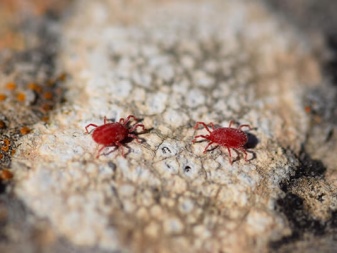
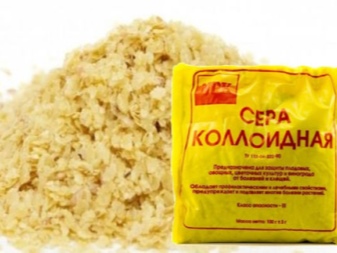
Fruit moth
Small but very harmful insect. The life of this butterfly is very short - up to two weeks maximum, but there will be many eggs from it. The butterfly itself is not dangerous, but its caterpillars are very even. They eat up young foliage, buds and shoots.Due to the activity of the caterpillars, the tree weakens quickly.
To quickly neutralize the pest, the trunk must whitewash in early spring. Also in the trees install trap belts... Spawned parasites are cut off along with their nests, and then burned away from the garden.
It is very important that at the time of cutting branches and nests there is a cloth or film under the tree. Otherwise, individual tracks will hit the ground and quickly come back.
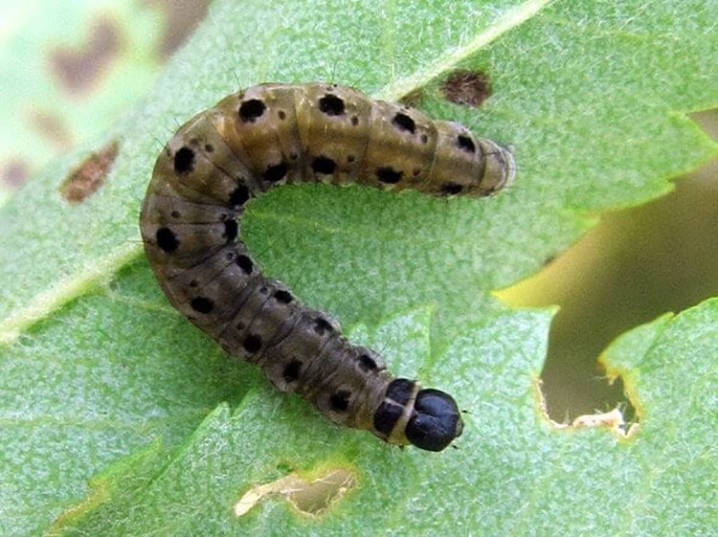
Eastern moth
It is a pest that multiplies at a tremendous rate. Butterfly larvae cause harm... They settle in the fruits and slowly eat them from the inside. In addition, caterpillars also negatively affect the ovary. It should be noted that this pest belongs to the quarantine subspecies. This term means that peaches from the affected tree cannot be transported from the region where the crop grows.
For treatment, pruning of the affected shoots is carried out. All fruits with worms should be removed. If there is absolutely nowhere to put them, you can choose a place in the garden and make holes 0.5 m deep, where to put the fruits. Next, they need to be buried by tamping the ground. After these events, they start to spraying with insecticides... You can take, for example, Karbofos. Spraying is carried out three times during the growing season. The interval between procedures should be 14 days.

Shield
This insect lives in the bark, feeds on it, as well as leaves and shoots. Because of this, the wood covering becomes porous, red dots are visible on it. The shoots begin to dry out, no harvest is formed on them.
You need to look for the scabbard under the bark. To do this, the exfoliated areas are pushed aside, and you can immediately see the insect colony. All infected parts are removed. In addition, the trees are treated with tobacco tincture. It is easy to do. You need to take 0.4 kg of raw materials, pour a bucket of water. Then the infusion is left for 24 hours. After this time, the mixture is boiled for 120 minutes, then 0.05 kg of household soap is added and supplemented with another bucket of water. After treatment with the tobacco mixture, spraying with insecticides follows.

Leaf roll
A small butterfly that lays a huge number of eggs... The appeared caterpillars parasitize on the leaves, which is why they quickly curl. Then the pests move to inflorescences, buds, even to fruits. The pupated caterpillars eventually turn into butterflies, and the cycle repeats.
You need to get rid of the leaf roll at the beginning of spring, until the air warms up. Insecticides will be most effective. Spraying is carried out several times. In addition, wormwood infusion will be an excellent remedy against the parasite. You need to take 0.8 kg of dry wormwood (you can also fresh, then 0.5 buckets) and pour the raw material with 10 liters of liquid. This mixture is infused for 48 hours. Then it is boiled for 30 minutes, cooled and filtered.
The amount of liquid after these manipulations will decrease, and more will need to be added so that the volume remains the same. Before use, the solution is diluted with water in a 1: 1 ratio.
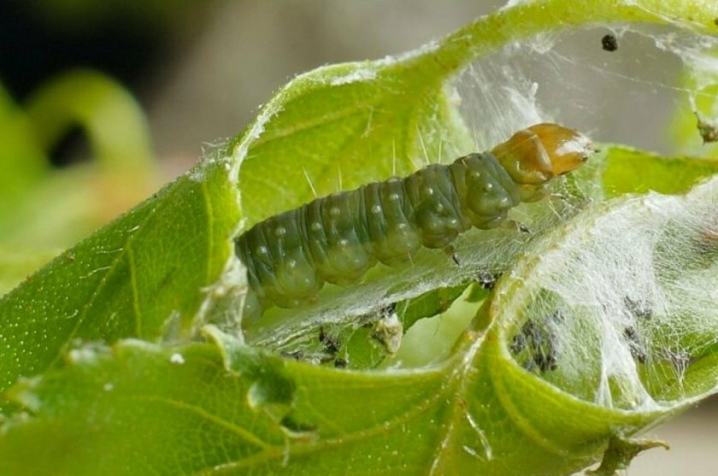
Prevention measures
Treating peach diseases is always long and difficult. To make illnesses and illnesses appear less often, it is important to pay attention to preventive measures.
- At the beginning of autumn, be sure to collect all the fallen leaves.... It will also be necessary to collect the remains of old roots and branches. All this is burnt behind the site, and the ash can then be used as top dressing.
- Towards the end of autumn, you need to dig well the ground around the tree. This will allow you to find and destroy the larvae that could be deposited by pests. On the surface of the soil, they are threatened with one hundred percent death from the cold.
- Make a solution of slaked lime and copper sulfate (3%). Use it to whiten the trunks, as well as the skeletal branches of the peach. In addition, before the beginning of winter, it is necessary to spray the trunks with Bordeaux liquid.
- In the spring, peaches should be treated with fungicides. They will help against rot, scab and other diseases. This is especially true for young and still weak seedlings.The first spraying is carried out even before bud break.
- Continue processing throughout the season... The easiest way will be to use tank mixes - these are combinations of insecticides and fungicides. Spraying is carried out in spring and summer. As soon as the fruits begin to sing, it is worth switching to safer drugs.

You also need to remember the following recommendations:
- keep the trunk circle clean;
- carry out trimming in a timely manner, especially sanitary;
- water the peach correctly, avoiding excess moisture;
- stick to the feeding schedule, strictly following it.
If the tree is ill, it is worth helping it recover. For this, it is recommended to buy stimulating and restorative drugs, an extensive range of which is available in gardening stores.
In addition, a weakened tree must be protected from frost, even if this variety is famous for its resistance to cold weather.












The comment was sent successfully.